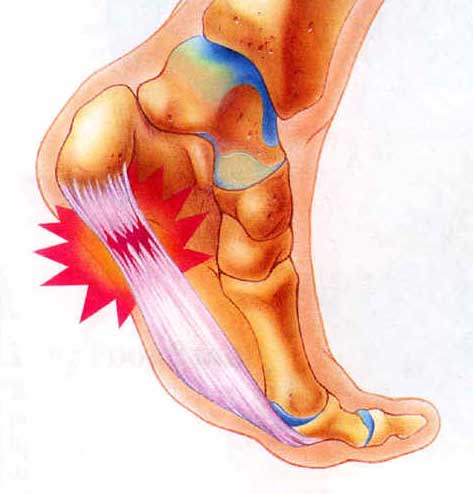Summer feels like it’s finally here, and for some, the season brings with it an onset of foot pain. Physical therapists often see an uptick in foot pain during the month of June, which may be attributed to getting outside more as the weather warms.
The combination of spending more time walking outside and switching from supportive winter boots and gym shoes to flats and flip flops contributes to an increased potential for sore feet. One of the most common types of foot pain is a condition called plantar fasciitis, and it can be difficult to treat if ignored.
The plantar fascia is a long band of tissue that spans from the ball of the foot back to the heel. Pain can occur anywhere along the fascia. It is most commonly painful underneath and just in front of the heel bone. People with this condition will often report pain that occurs with their first few steps out of bed in the morning, during prolonged standing or walking, or while going up and down stairs. For some people the pain is more of a dull ache, while others experience more intermittent sharp pains that increase with activity.
Physical therapy treatment for this condition is a multifaceted approach. One of the first and most important things we address is ensuring proper footwear. We also may recommend and make custom orthotics, depending on foot type. Additionally, a gait analysis may be performed to address any issues with walking mechanics.
As with most lower extremity injuries, it is also important to address balance deficits and to retrain the body’s proprioceptive system which uses feedback to allow the body to understand where it is in space. In severe or chronic cases, a physical therapist may recommend a duration of activity modification that could be necessary to allow time for the injury to heal.
For another perspective on this topic, I spoke with Dr. Scott Nemec, DO, of Bay Street Orthopedics. Dr. Nemec is an orthopedic surgeon and specializes in foot and ankle conditions.
What are some of the initial treatment options you recommend for plantar fasciitis? Initial treatment recommendations for plantar fasciitis include diligent calf stretching, night splinting, physical therapy (including modalities such as iontophoresis), icing, and NSAIDS (oral or topical).
If symptoms don’t improve, how long should a patient wait before they consider more aggressive intervention? Initial treatment methods are usually recommended for 2-3 months. If improvement is not obtained, then more aggressive therapy such as corticosteroid injections may be warranted.
Are there any surgical options for cases that do not resolve in a reasonable amount of time? Surgical management is an option if non-surgical methods fail to give relief. The surgical procedure performed for recalcitrant plantar fasciitis is a gastrocnemius recession (Strayer procedure). The procedure surgically stretches the gastrocnemius and unloads the plantar fascia. Good results are usually obtained in most patients. Release of the plantar fascia itself should be avoided as this can result in the development of a flat foot.
If you are one of the many individuals that has experienced several weeks of foot pain talk with your physician or physical therapist, and don’t waste any more time getting on the road to recovery!








